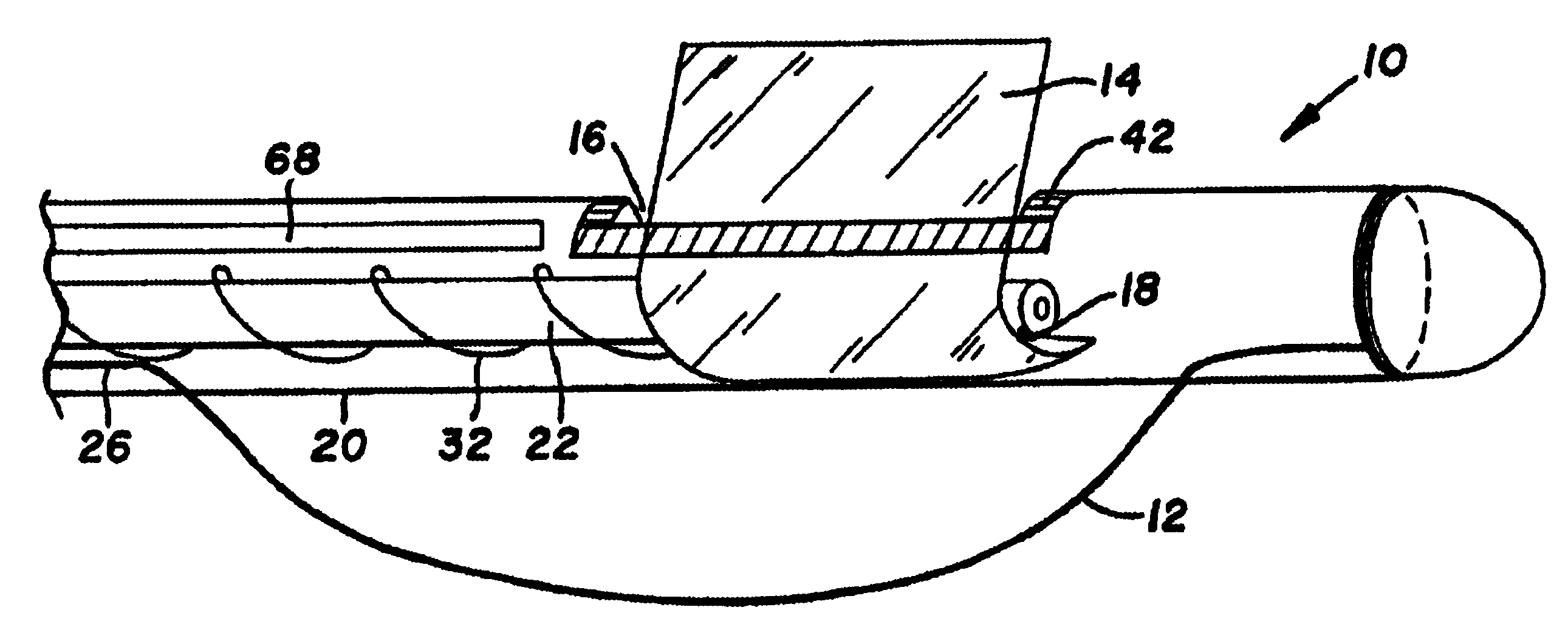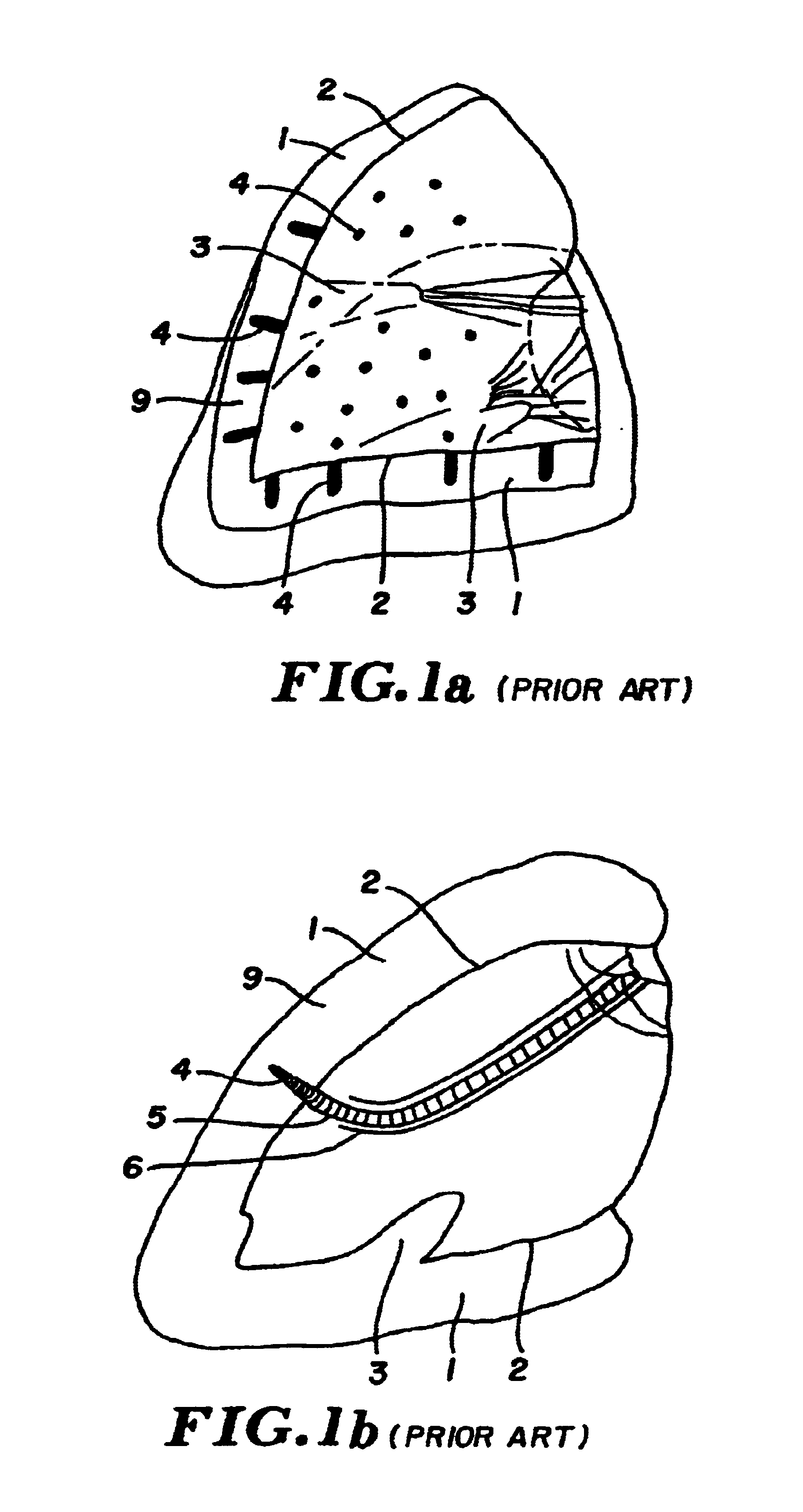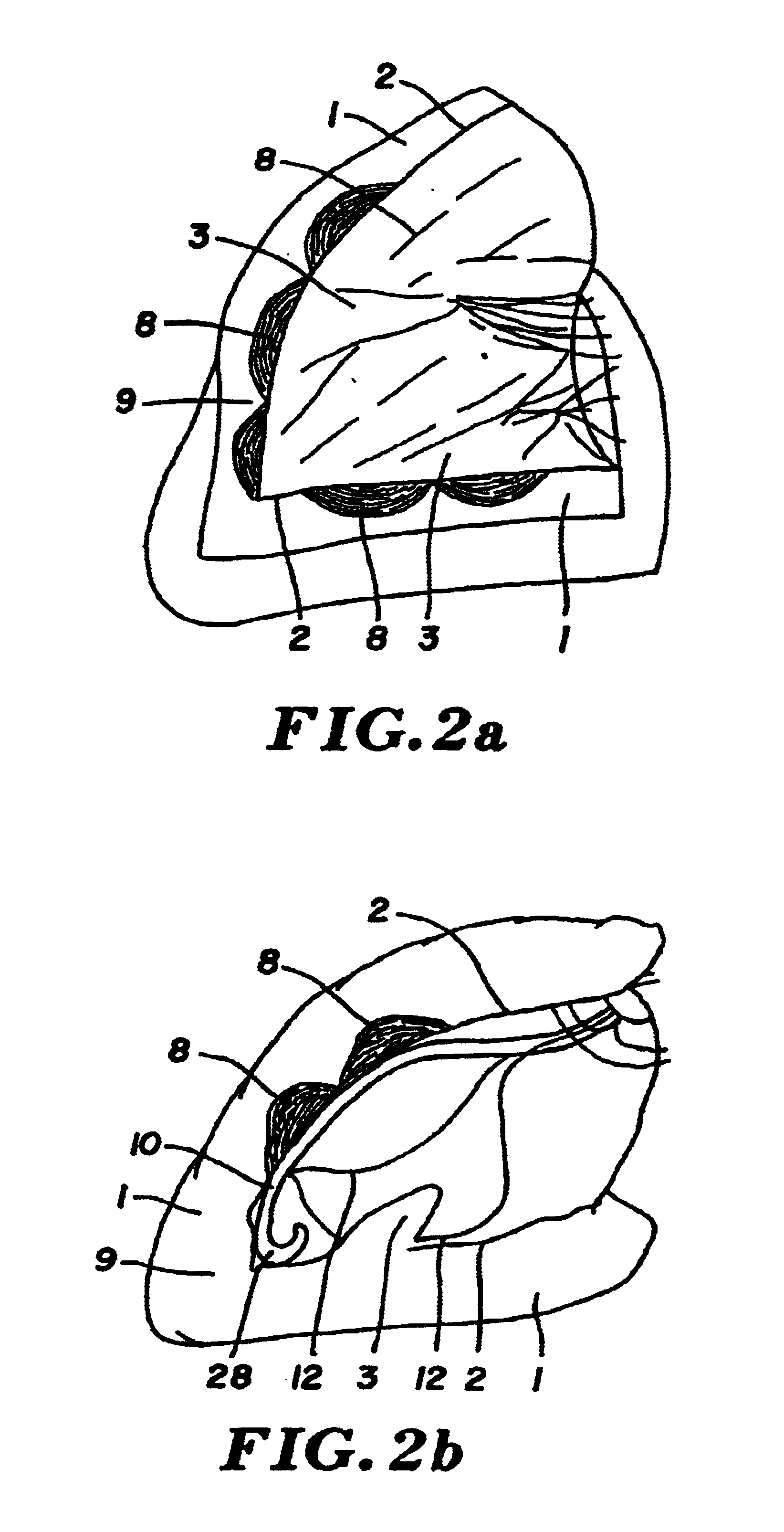Percutaneous transmyocardial revascularization (PTMR) system
a transmyocardial revascularization and percutaneous technology, applied in the field of percutaneous transmyocardial revascularization (ptmr) system, can solve the problems of non-functional and traumatic distal tip of this catheter, and achieve the effect of optimizing physiologic response and reliability distribution of channels
- Summary
- Abstract
- Description
- Claims
- Application Information
AI Technical Summary
Benefits of technology
Problems solved by technology
Method used
Image
Examples
Embodiment Construction
[0032]The catheter systems are intended to create thin, linear channels capable to treating cardiac abnormalities such as angina, cardiovascular disease, ventricular tachycardia, atrial fibrillation, ventricular fibrillation or other applications benefiting from revascularization or ablation. The devices of the invention are applicable to surgical and well as percutaneous approaches to inducing angiogenesis in cardiac or other tissue.
[0033]To overcome the deficiencies of the prior art, catheters of the invention do not position a distal cutting tip against the endocardium when producing channels through the endocardial surface and into the myocardium. Instead, the catheters 10 of the invention are designed for a “sideways” placement, to position a length of the catheter against the endocardial surface and ensure intimate tissue contact with the side of the catheter through the use of support strands 12. In contrast to prior approaches, the distal tip of this catheter is non-function...
PUM
 Login to View More
Login to View More Abstract
Description
Claims
Application Information
 Login to View More
Login to View More - R&D
- Intellectual Property
- Life Sciences
- Materials
- Tech Scout
- Unparalleled Data Quality
- Higher Quality Content
- 60% Fewer Hallucinations
Browse by: Latest US Patents, China's latest patents, Technical Efficacy Thesaurus, Application Domain, Technology Topic, Popular Technical Reports.
© 2025 PatSnap. All rights reserved.Legal|Privacy policy|Modern Slavery Act Transparency Statement|Sitemap|About US| Contact US: help@patsnap.com



